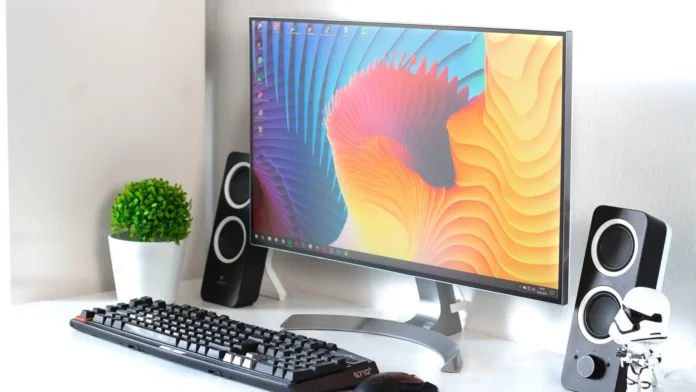In today’s world, many devices only work when they’re connected to a TV or monitor. For example, your desktop PC or game console cannot function properly without a monitor or at least a TV connected to it.
Not surprisingly, many people are interested in buying a good monitor to use with your devices. Today the market has a wide variety of models that will suit any purpose.
You can buy a monitor with high resolution, such as 4K, or with minimal response time for comfortable gaming. Also, present a model with different technologies to improve the picture or color.
However, any of the monitors presented can have problems with red pixels.
What does red pixels mean on your monitor
If you have ever had a problem with a dot or pixel showing only one color on your monitor, you should know that this defect is a manufacturing defect.
This defect occurs because there isn’t enough energy to remove the pixel at that location on your monitor.
There are two types of such pixels, one temporary which may disappear after some time, and the other one permanent which remains on your monitor forever. They’re called jammed and dead pixels.
- Stuck pixels are temporary pixels that should disappear over time.
- Dead pixels are permanent pixels that have failed.
Usually, if your pixel is black it means that the pixel is dead and that point isn’t going anywhere. In that case, it’s time to buy a new monitor for your computer.
However, if you see a blue, red, or green dot, then you’re in luck, these are temporary dots and they should disappear after a while.
Besides these two pixels, there is another category. In this category, a white pixel is permanently displayed, and it’s called a hot pixel.
How to fix temporary pixels on your monitor
In addition to a stuck pixel problem, red dots can also be caused by a faulty cable, driver problems, or monitor power. These pixels can blink, move to different corners of the monitor or get stuck in one spot.
Regardless of the cause of the red pixel, there are several universal steps you can take to solve the problem. You should try them all one by one and see which one can solve your problem.
Check the monitor and computer connection cable
One of the most common causes of such problems is a damaged cable or poor connection.
To fix this yourself you need to disconnect the cable from the monitor and computer, then clean it thoroughly and insert it into the correct ports.
Make sure that the cables are firmly inserted into the ports. If possible change the port. In most cases, this solves problems with red pixels.
Try replacing the connection cable
Cables also have a certain lifecycle and from time to time they can get damaged and break down. Sometimes it’s old and damaged cables that cause similar problems with your monitor.
However, even new cables can have manufacturing defects. Therefore, if possible replace the cable and check if the problem is still there.
Check if a pixel is jammed
If a red pixel has been in the same place for a long time then it’s possible that it’s just stuck in its position. You can free it by using third-party software. This is where programs like
- Jscreen
- Undead Pixel
- Pixel Healer
These tools trigger the pixels and make them return to their original position. They can help you fix problems with stuck pixels.
Remember that if the color of your pixel is black, it has most likely stopped getting power and that means it’s dead. In this case, you will not be able to remove it.
Update your display drivers
From time to time also the display drivers can cause these problems. Make sure that you reinstall the display drivers and check them for updates.
You can find the drivers on the manufacturer’s website and you can install them from there. Reinstalling and updating the drivers solves many problems with the pictures and colors on your monitor.
Replace the Power Supply
Also if you have installed new and powerful equipment in your PC but you still have the old power supply, this may cause problems. For example, if you have replaced the RAM, graphics cards (GPU), processor (CPU), monitor, etc., all of which provide more performance and therefore require more power.
If your power supply isn’t up to date and up to spec, then download any Benchmark tool and run it. If things get worse while running Benchmark tests, you may need to replace your power supply.
Check the power supply
The problem may also be due to a lack of power. Check if there is nothing else plugged into the outlet that is powering your monitor or computer. Try unplugging other equipment and see if the situation changes.
Press on the monitor
If none of the above helps you then try just pushing the area of the screen with the damaged pixel. Sometimes this helps to fix the problem.
Be careful though, if you push too hard you risk damaging your monitor.
Just wait
If nothing helps, you should just wait. Since problems with temporary pixels often go away on their own over time. Wait a few days and see if the stuck pixel is gone after that time




